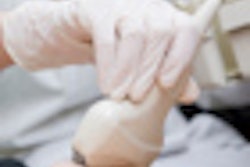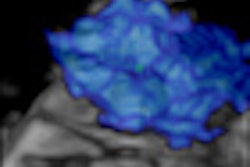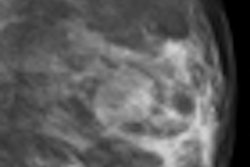VIENNA - In one word, the future of ultrasound in breast imaging is elastography.
Two of the three presentations given on Wednesday during the Advances in Ultrasound session organized by the European Society of Breast Imaging (EUSOBI) were devoted to the now-established techniques for characterizing breast lesions using a handheld transducer.
And both presenters were pleased to note that elastography is being considered as a parameter for the revision of descriptors and categories of the BI-RADS lexicon.
Organized by the EUSOBI, the session was part of an annual scientific program being held March 2 and 3 ahead of the formal start of the 2011 European Congress of Radiology (ECR).
In a technical review of elastography, Dr. Giorgio Rizzatto, a professor of radiology at the University of Udine, described the three methods for generating then measuring a disruption in the B-mode signal to determine tissue stiffness.
This ability to distinguish liquid from nonliquid structures has shaken systems for grading lesion severity by bringing greater confidence in distinguishing malignant lesions from benign structures.
Yet the current state of evidence for elastography means it can only serve as a descriptor for clinicians that needs to be supported by more complete imaging studies.
Rizzatto described at length the recent introduction of the ShearWave technology from SuperSonic Imagine that replaces the physical compression of the breast using the transducer with a pulse wave.
While this technique is less operator-dependent and yields reproducible results, a learning curve remains, he said, citing a 2011 article in the American Journal of Roentgenology (March 2011, Vol. 196:3, pp. 730-736).
Following this technical discussion came a more pointed presentation, "Elasto Practical Overview, Is It of Use," by Dr. Ingrid Schreer, a professor of radiology at the University Hospital Schleswig-Holstein, Kiel.
Schreer's perspective is as practiced as it is practical as one of the authors of the landmark study on breast ultrasound published in European Radiology (May 2010, Vol. 20:5, pp. 1085-1092).
That study concluded handheld ultrasound examinations in addition to mammography resulted in a significant increase in breast cancer detection rate over mammography alone.
While acknowledging the freehand compression technique for elastography is highly dependent on the operator's experience, Schreer cited studies showing remarkably consistent results in lesion characterization with sensitivity upward of 89.7% and specificity of 83% and higher.
Her investigations of the ShearWave technology is encouraging with reproducibility, quantitative mapping, and what she termed "a local assessment of stiffness with fine resolution."
The usefulness of this technology, Schreer said, is increased confidence in grading lesions, as well as downgrading alarming BI-RADS scores, thereby eliminating unnecessary biopsies.
Yet the high-end technology also carries a high price, she said.
"ShearWave is so expensive that not everybody is going to have one," Schreer said, "so for a good while it will only be available at the reference centers."
"Yet the great majority of breast screenings and follow-ups are not going to be performed at university centers," she said, so handheld examinations and compression elastography will remain the most widespread and accessible technologies.
"And elastography will never replace B-mode," Schreer said, though she expects it will be greatly strengthened and clarified with the BI-RADS revision.



















